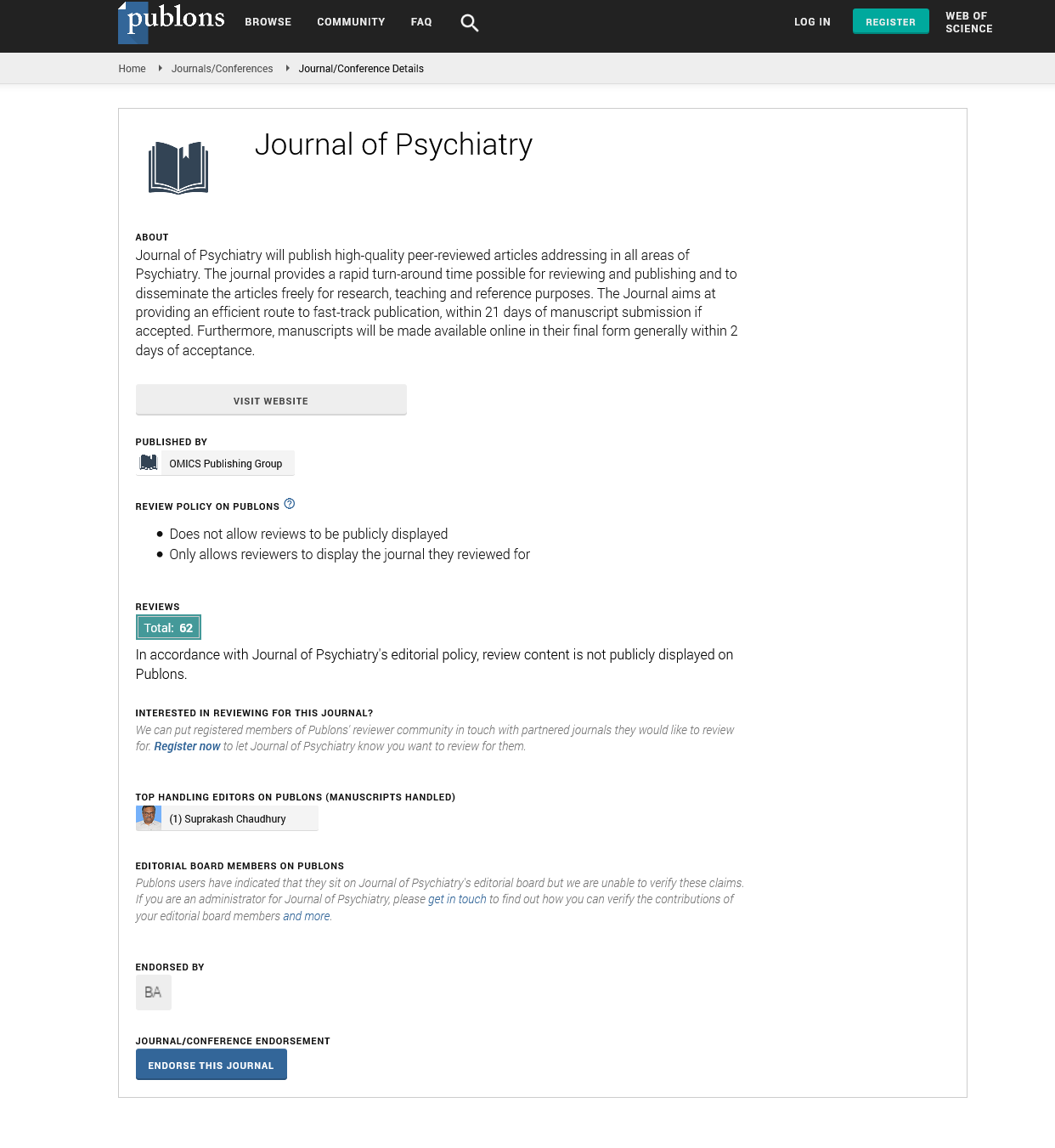Indexed In
- RefSeek
- Hamdard University
- EBSCO A-Z
- OCLC- WorldCat
- SWB online catalog
- Publons
- International committee of medical journals editors (ICMJE)
- Geneva Foundation for Medical Education and Research
Useful Links
Share This Page
Open Access Journals
- Agri and Aquaculture
- Biochemistry
- Bioinformatics & Systems Biology
- Business & Management
- Chemistry
- Clinical Sciences
- Engineering
- Food & Nutrition
- General Science
- Genetics & Molecular Biology
- Immunology & Microbiology
- Medical Sciences
- Neuroscience & Psychology
- Nursing & Health Care
- Pharmaceutical Sciences
Neuromuscular fatigue and recovery profiles in individuals with intellectual disability after exhausting submaximal exercise
Euro Global Summit and Medicare Expo on Psychiatry
July 20-22, 2015 Barcelona, Spain
Firas Zghal, Rihab Borji2, Nidhal Zarrouk2, Vincent Martin3, Sonia Sahli2 and Haithem Rebai2
Posters-Accepted Abstracts: J Psychiatry
Abstract:
The purpose of this study was to compare neuromuscular fatigue profile and recovery kinetic between individuals with intellectual disability (ID) and individuals with typical development after exhausting submaximal contraction. Ten men with mild ID (age=23.1±2.7 years; height=1.7±0.1 m; weight=77.9±8.3 kg; IQ=60±2.7) were compared to a control group consisted of 10 men without ID matched in age, height and weight: (age=25.2±2.7 years; height=1.7±0.1 m; weight=75.3±9.2 kg). The evaluation of neuromuscular function consisted in brief isometric maximal voluntary contractions (IMVC) of the knee extensor muscles superimposed and immediately followed by electrical nerve stimulation. These IMVC were performed before, immediately after an exhaustive submaximal isometric task (at 15% of IMVC) and during recovery period (lasted 33 minutes after the exercise cessation). Maximal force production, voluntary activation level, potentiated resting twitch and the Root Mean Square (RMS) from the electromyography (EMG) signals were measured during each IMVC and then analyzed. The main results of our study showed that individuals with ID developed lower baseline values of IMVC, voluntary activation level, potentiated resting twitch and RMS Mmax-1 than individuals without ID. Furthermore, they presented longer time duration of exhausting submaximal contraction but greater force decline at exhaustion compared to their counterparts with typical development. This more important force decline measured immediately after the fatiguing exercise was attributed to a more pronounced central fatigue in individuals with ID as expected by the higher decline of voluntary activation at exhaustion. Moreover, this central fatigue was persistent during recovery period in experimental group compared to its fast recovery in control group. However, they presented lower peripheral fatigue with faster recovery of potentiated resting twitch. We concluded according to these results that individuals with ID presented different neuromuscular fatigue and recovery profiles compared to individuals with typical development.

